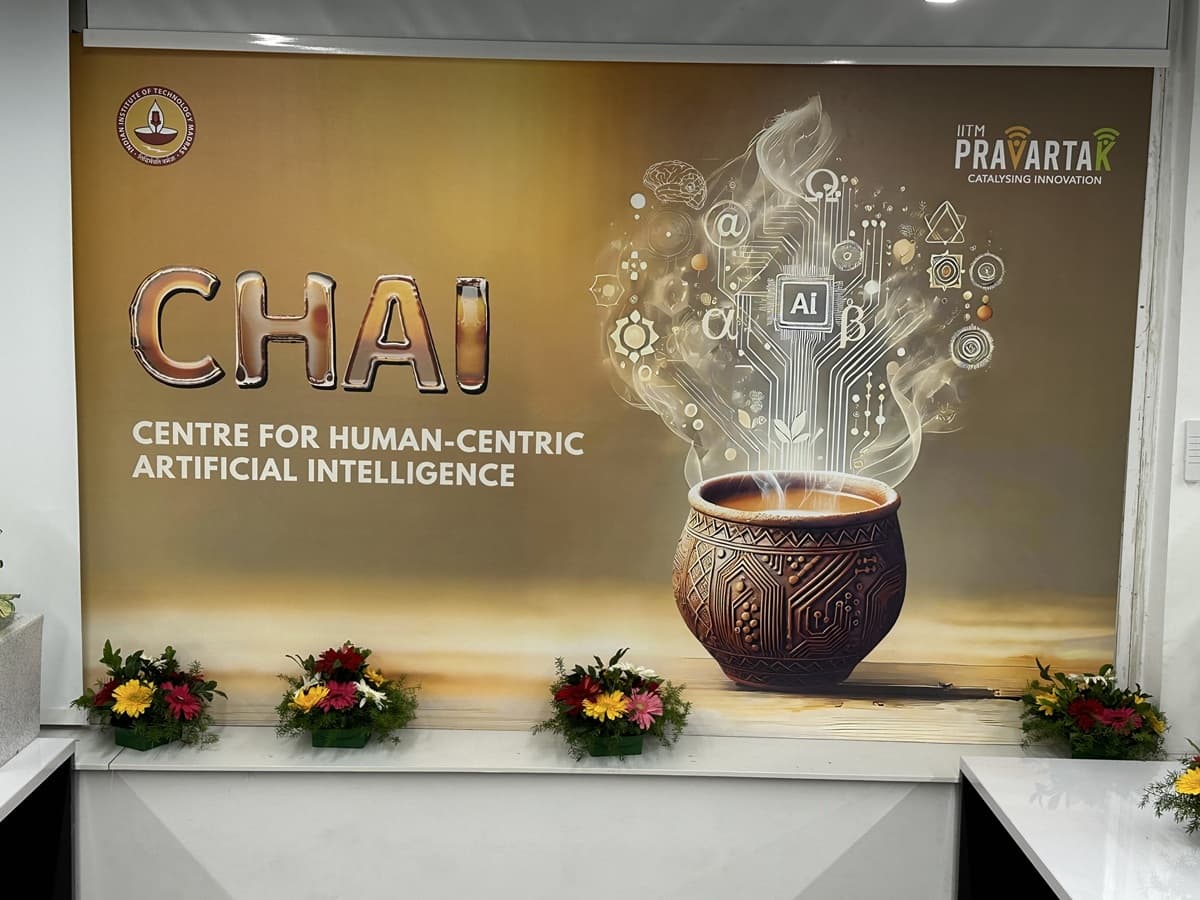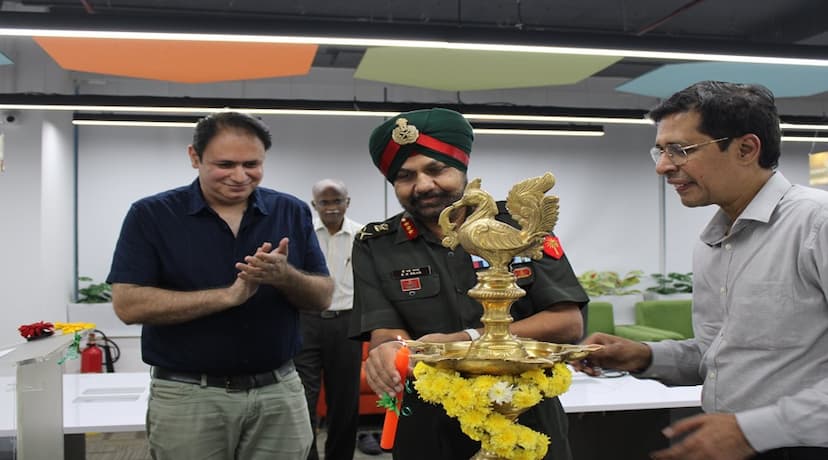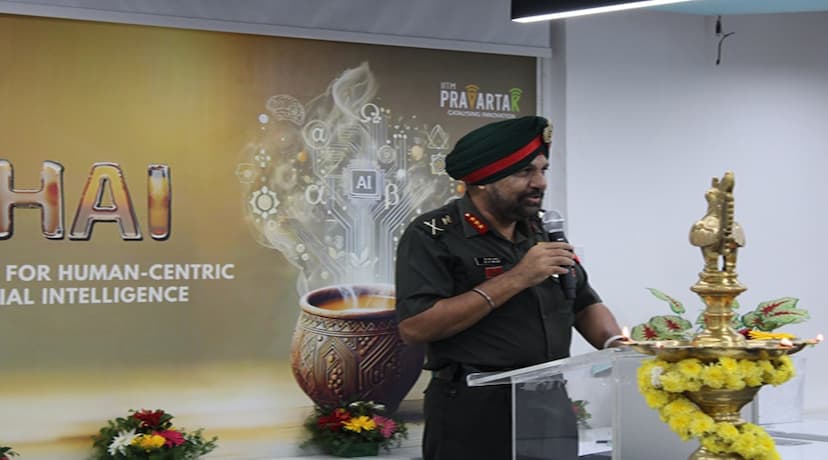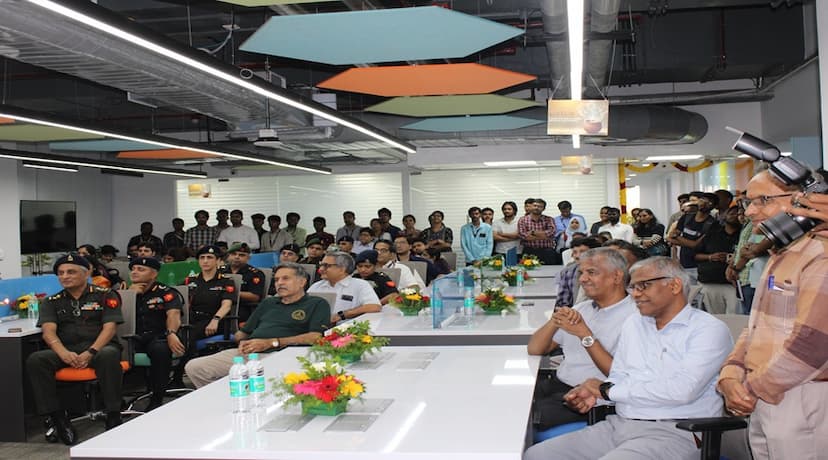IITMPTF launches great CHAI to amplify human potential

IITMPTF has launched a ‘Centre for Human-Centric Artificial Intelligence’ (CHAI) to harness AI to amplify human potential, which could be a critical opportunity for India.
The Centre’s activities will include technology development, aiding entrepreneurship development, human resource development, and international collaborations.


This newly-launched centre will help identify risks to inform future regulations, ensuring that India’s AI development is safe and responsible, especially in the Indian context while maximising innovation, say sources from IITMPTF.
Projects
IITMPTF, the parent organisation of this centre, is already working on projects of National importance with the Supreme Court of India, the Indian Parliament (via Sansad TV) and the Indian Army.
Launch
The centre was launched on 14 November 2024 at IIT Madras Research Park in the presence of Lt.Gen. KS Brar, AVSM, GoC Dakshin Bharat, Prof. V. Kamakoti, Director, IIT Madras, Dr. M.J. Shankar Raman, CEO, IITMPTF, Prof. Gaurav Raina, Chief Scientist, CHAI, students, researchers and other stakeholders.

Director of IIT Madras
Prof. V. Kamakoti, Director, IIT Madras, said, Human Centric AI Systems seem to be the most convincing ones for the end-users to adopt.
Developments in CHAI will look at various aspects of deployment of AI systems, specifically from explainability and responsibility points of view, he said.
Empowering
Lt.Gen. KS Brar said that the centre should focus on Empowering the future where AI serves humanity, enhancing lives and fostering a better world for all.


The solutions developed, and the lessons learned may also be applied in other countries, say sources from IITMPTF.
Scope
The scope of the centre would be around three dimensions: enhancing human potential, protecting citizens and amplifying societal values which are embodied through culture and heritage.
Focus
Prof. Gaurav Raina, the Chief Scientist at the Centre, who is also Faculty, Department of Electrical Engineering, IIT Madras, said the focus of this Centre also aligns with the broad principles of Industry 5.0, which emphasises human-centricity and sustainability.

The focus will be on translational research that leads to impactful solutions in the form of data sets, AI models, tools and AI applications in the areas aligned with the scope of the centre, he said.
Research areas
Some of the critical areas for research and development include:
⮚ Language models: A key focus will be on small language models better suited to smaller, domain-specific, and contextualised data sets.
⮚ Languages: Especially in Indian languages, but more generally in non-English languages. This helps us to start locally but eventually be impactful globally.
⮚ Responsible and Safe AI: Our research and development will focus on addressing issues related to privacy, biases, and ethical considerations, among others.
This emphasis on responsible AI will ensure that our solutions are innovative but also ethical and safe, say sources from IITMPTF.
Capacity building in AI
The Centre will provide an opportunity for internships for students across the country to develop their skills on cutting edge AI projects and solutions.
Students within IIT Madras will be able to pursue their undergraduate, masters and Phd research projects and thesis with co-guidance from the Centre. This will aid in building capacity for AI talent in the country, say sources from IITMPTF.

Under the umbrella of protecting citizens, the applications will include aspects like cyber-security, cyber-fraud, and disinformation security. Such applications will also be important for strengthening democracy.
For culture and heritage, we hope to preserve, revive, and widely share our very rich cultural diversity and heritage, aided with tools like AI.
About IITMPTF
IIT-M Pravartak Technologies is a Section 8 Company housing the Technology Innovation Hub on Sensors, Networking, Actuators and Control Systems.
It is funded by the Department of Science and Technology, Government of India, under its National Mission on Interdisciplinary Cyber-Physical Systems and hosted by IIT Madras.
Also Read – IIT Kanpur transfers technology for great device
S Vishnu Sharmaa now works with collegechalo.com in the news team. His work involves writing articles related to the education sector in India with a keen focus on higher education issues. Journalism has always been a passion for him. He has more than 10 years of enriching experience with various media organizations like Eenadu, Webdunia, News Today, Infodea. He also has a strong interest in writing about defence and railway related issues.









